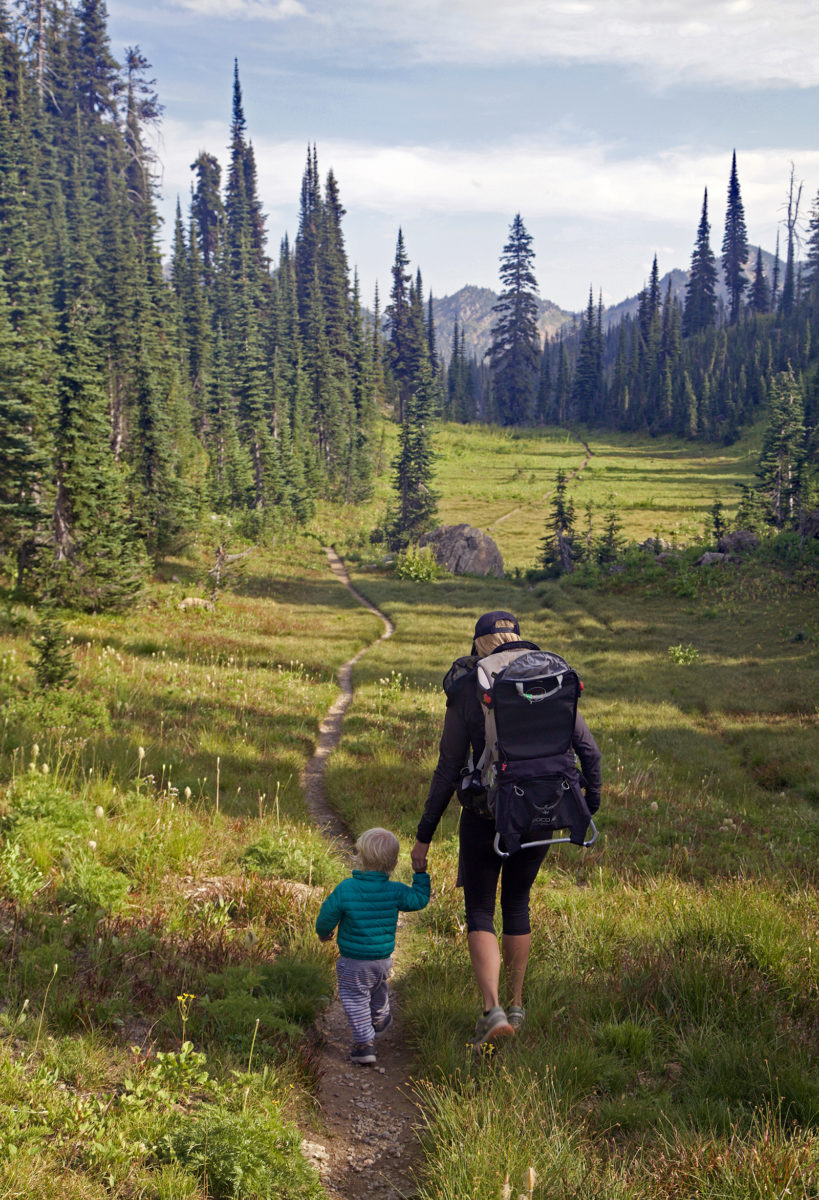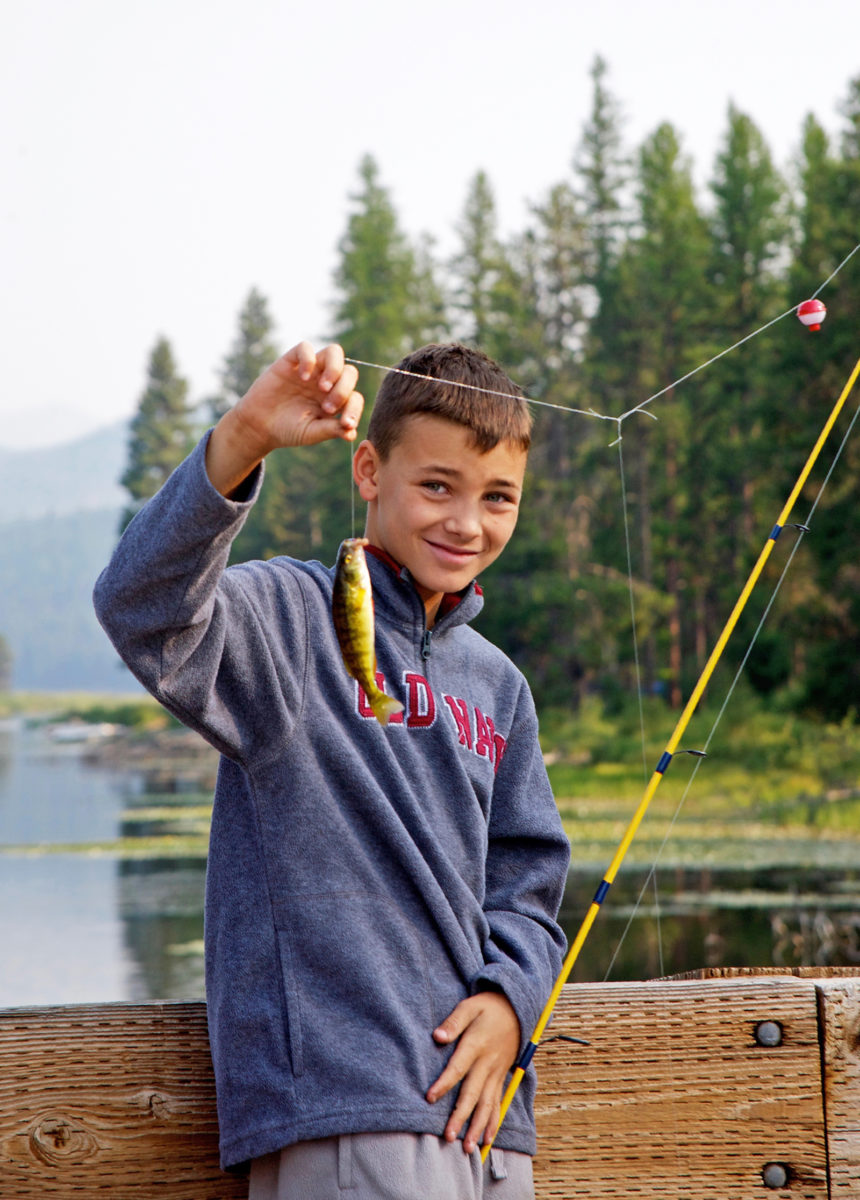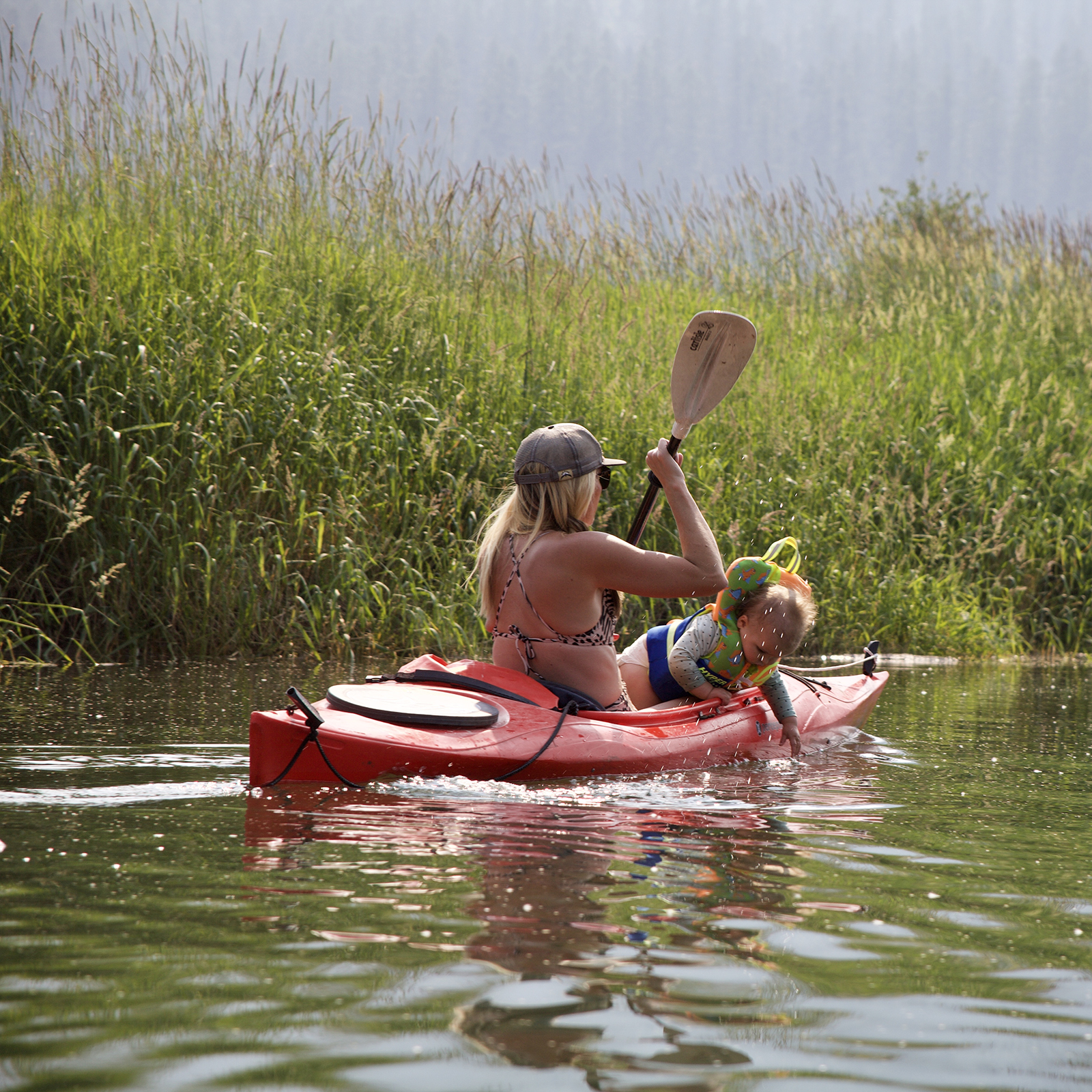Looking for a place for your kids to play with free admission, offering hours of entertainment and learning that will improve their health and establish a lifelong relation-ship? This place is called the great outdoors and in Northwest Montana, there is plenty of it.
Kids by nature know how to have fun when playing outside, but the hypnotic trance of hours on a screen can dull that instinct. According to the National Wildlife Federation, the average child spends as few as 30 minutes outside and more than seven hours on a screen per day? Even though we should hope to do better in the extraordinary natural setting we live in, it appears to be a cultural problem of today’s electronic world.
A lot of studies focused on the benefits of getting kids outside, because it can reduce stress and anxiety, promote independence and creativity and more. There are many ways to encourage and inspire kids to “Go outside and play.” Sometimes the most simple and timeless things like throwing rocks and making a splash is fun for kids of all ages. More organized outdoor activities like gardening, hiking, camping, fishing and boating can be shared by the whole family, which can nurture family relationships and cultivate a deeper appreciation of nature that might also inspire a lifetime outdoor activity.
Kids are natural explorers fueled by curiosity and a fresh outlook of the world. Be present, but also let them take the lead as they discover the world around them and learn valuable life lessons. The peacefulness and purity of nature can free their minds from the clutter of a busy world and allow them to slow down and focus on simple wonders – a butterfly’s graceful gathering of flower nectar, the animated show of cottony clouds that change with each moment and the scent of wet grass and earth after a cleansing rain.

Our daughters were lucky to grow up on Swan Lake before children’s books and blocks were replaced by technology. When the two little girls went out the door they seemed to transform in to their own version of “wild things” undaunted by being wet or dirty or cold.
I remember my oldest daughter Risa’s first wild friend and one of her first nature lessons. While playing in the garden she discovered an earthworm and was fascinated by its squirming and cool slimy body in her little hand. Later she approached her father, messy blonde hair framing her face smudged with dirt. She looked up at him with big blue eyes and extended a dirty hand holding the lifeless worm and said, “Daddy, fix it.” The unfixable worm went back to the earth and Risa learned of her impact on other living things.
Eventually joined by her little sister Kelsey, the pair could hardly wait to go outside each day and became adept at capturing insects, snakes, frogs, minnows, crawdads and turtles. Of course they wanted to keep them, but in remembrance of that little earthworm, we set up a “Catch and Release” program, which included establishing an appropriate habitat and knowing how to provide the critters with food and (hopefully) keeping them alive until their release a week later. A stock tank was set up with water, sticks, rocks and moss and the unofficial Swan Lake Zoo was established. When they discovered a dead fly wasn’t interesting to their frog they learned that the frog’s predatory instinct was dependent on motion so they began to catch live insects and removed a wing so that the fly could still move, but not escape. A bigger lesson was learned when they excitedly ran to the “zoo” for a morning feeding and to their horror found “Freddy” the frog dangling out of the mouth of a garter snake. Freddy was pulled out and the snake was flung as far as a 10-year old can throw. I’m not sure what happened to the newly emancipated snake, but Freddy the frog couldn’t be fixed.
Through their outdoor adventures and experiments, they learned about the circle of life, cause and effect and truth and consequences. These were defining moments in their young lives. They included moments that seemed more like magic than science. The search for the moon each night before bed, watching for the first fuzzy goslings each spring and listening for the hoot of the owl perched in a towering pine near the house. Sometimes we shared the moments and other times the moments were theirs to process on their own as they learned about themselves while also learning about the world around them.
The girls learned a lot about the natural world, but probably the most valuable lesson was this — they learned to care about the world they lived in and in turn, had the desire to take care
of it.

10 ways to get kids out into our big, beautiful backyard
1) “A Hiking we will go.” Start slow and be well prepared in order to create a good memory from the beginning. Plan on stops to observe the world around them and to enjoy a snack or water. What to pack: water, snacks, maps, books or apps for identifying wildflowers, trees, animal tracks and plants. Be prepared and be safe – pack bear spray and a first aid kit.
2) Take them to the lake. What to bring: Goggles to explore what’s beneath, buckets, nets and a magnifying glass for a closer look. Life preservers, if you plan on spending time near the river or on a dock (especially if caring for more than one child.)
3) Go Fishing. Area ponds provide a great place to introduce children to fishing. A few great kid-friendly spots in the Flathead are the Pine Grove Pond off Ross Crossing, Shady Lane Pond near the Old Steel Bridge in Kalispell, and the Dry Bridge Slough south of the Conrad Mansion, which is stocked with rainbow trout. You can also take them to the Creston Fish Hatchery to learn about fish and conservation where they can observe fish in different life stages in the large tanks. There is also an interactive nature trail on site that is open to the public.

4) Making Tracks. Look for animal signs. Look for signs of life in the mud and snow. Other signs that can reveal the presence of wildlife are bear claw scratches on trees, mountain lion shredding, elk and deer rubbings on trees, diggings and scat.
5) A woodland scavenger hunt. Turn a game into a learning opportunity. Have a scavenger hunt locating insects, plants, wildlife and trees. Base a scavenger on Montana’s state animals (the state bird is the western meadowlark and the state fish is the black spotted cutthroat trout) and plants (bitterroot, ponderosa pine) to learn about them and where to find each of these state treasures. You can find a list and a coloring printout at: www.montanakids.com/activities_and_games/
6) Grow a garden. Let them plant their own space and care for it. Pick and eat vegetables and fruit right off the vine. Harvest and cook together to reinforce the connection between food and where it comes from.
7) Visit a preserve. National Wildlife Preserves are great places to spot wildlife and en-joy a pristine natural habitat. Visit the Bison Range near Charlo or a waterfowl preserve at Ninepines or along the north shore of Flathead Lake.
8) Pitch a tent in your backyard. My first “tent” was blankets clipped to the clothesline and weighted down with rocks, but there are many relatively inexpensive tents available to keep out pesky insects and keep things cozier on a cool Montana evening.
9) Explore local programs and visitor centers. The valley’s three main communities all have parks and rec departments, so check their websites for details about summer programing. Head up to Whitefish Mountain and visit the U.S. Forest Service’s Summit Nature Center. Lone Pine State Park in Kalispell frequently hosts children activities and interpretive programs. And Glacier National Park is full of interpretive destinations for the entire family.
10) “Twinkle Twinkle.” Look at the night sky. Glacier National Park is nationally recognized as a Dark Sky Park. Check their website to see what programs are offered this summer. Download a stargazing app that uses your smart phone to locate constellations from wherever you are. When the skies are clear, follow the moon phases and enjoy watching a full moon’s dramatic appearance over a mountaintop.
A final note
Purposeful parenting can be a good thing, but don’t over think it. Let your kids have the freedom to find their own refuge in nature. For some kids it night be the excitement of walking logs and climbing trees, for another it might be the therapeutic motion of digging in the dirt and for a quiet child it might be the peace found in lying in the grass and watching clouds float by. At the end of the day, you want a happy child – and sometimes that is enough.
